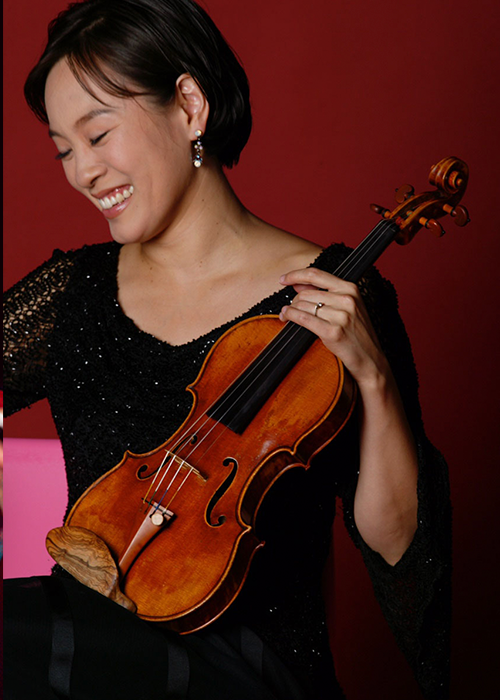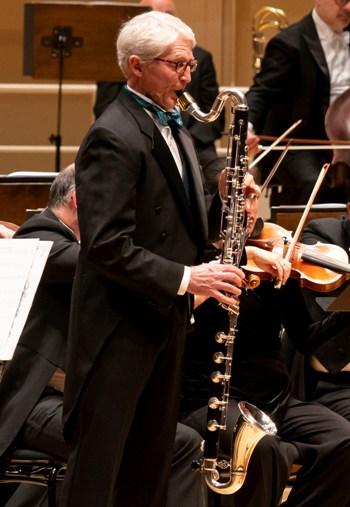Written by Steve Parks
The 37th annual Chesapeake Chamber Music Festival opened its second week with “Mozart and More” – something familiar and something probably never heard before by most if not all the audience at an early evening concert at downtown Easton’s beautiful Ebenezer Theater.In his mid-to-late 20s, from 1782 to 1785, Wolfgang Amadeus Mozart composed six string quartets in apparent homage to Haydn, his mentor and father-figure friend, who had just published six of his own quartets. But there’s no mistaking this third piece in the series for that of anyone but Mozart.

As played by a stellar foursome – Chesapeake Music’s co-artistic directors, cellist Marcy Rosen and violinist Catherine Cho, along with violist Maiya Papach and violinist Jennifer Liu – Mozart’s String Quartet in E-flat Major, K. 428 got what this masterpiece deserves: a spirited and finely honed performance.An energetic opening movement is marked by the deployment of nine notes of the 12 in the chromatic scale. Arranged with oddly spaced intervals, it somehow delights in the form of a sonata jumping unexpectedly to a new key, B-flat major, and teases with a few others while still managing a crisp landing. In the more somber second-movement andante, Rosen lays down a meditative undercurrent to Cho and Liu’s duel violin entreaties echoed by Papach on viola. As if awakened from a dream, the more assertive third-movement minuet comes closest to a salute to Haydn with its witty and playful opening before resolving into a distinctly Mozart tableau of artfully rendered expressions of sadness and consolation. The complex allegro finale seems to pose a question with teasing fillips that are answered with rambunctious conviction before evolving into a pleasing upper-string melody punctuated with finality by four triumphant chords. The second half of the one-hour-and-change concert without intermission featured J. Lawrie Bloom in Samuel Coleridge-Taylor’s Clarinet Quintet in f-sharp minor, Opus 10, performed with the same quartet as on the Mozart piece. Bloom, now retired, co-founded the Chesapeake chamber festival, now in its 37th year, with Rosen. The performance marked the first time that Bloom, for many years bass clarinetist with the Chicago Symphony Orchestra, has performed this quintet, which he says is both “magnificent” and “massively overlooked” – perhaps in part due to racial bias as it was written by an Anglo-African composer who died at 35 in 1912.

Seated in the center, flanked by the two violinists to his right with the cellist and violist to his left, Bloom is quiet at first as the Rosen plucks the cello forcefully in a percussive manner accompanied by syncopated viola and pizzicato violins, announcing that this is a true ensemble quintet and not just a vehicle for solo clarinet virtuoso moments. Not until its recapitulation does the clarinet play the principal theme of the first movement, resembling jazz in its phrasing.The second-movement Larghetto is also introduced by strings, principally by violinists Cho and Liu, in a pastoral theme suggesting a folk melody. The theme is repeated with tender, almost harp-like upper strings of the cello, and the soaring pianissimo of the first violin. A gently emotive cadenza passage led by Bloom’s bass clarinet brings the movement to sweet and satisfying repose. A double-time scherzo movement awakens the audience from the preceding lullaby effects with a rhythmic buoyancy and an affable clarinet melody before the strings grow restive again like an antsy brood before settling down to accompany Bloom’s birdsong reeds.The finale, aptly characterized as an allegro agitato, opens with a boldly wandering exploration flowing in a rapidly swirling stream from F sharp minor to G minor and back again. A brief interlude recollects the tender theme of the Larghetto until the vivace, now in F sharp major, whips up a bit more frenzy, perhaps influenced by Dvorak – greatly admired by Coleridge-Taylor – before emerging from the musical forest with a peaceful coda pulling it all together.The festival continues Friday, June 17, with a performance by Trio Colores, the Swiss-based percussion ensemble that won the Chesapeake Chamber Music International Competition in April. The concert begins with the Trio in b minor for Oboe, Clarinet, and Piano by Edouard Destenay. Saturday night’s “Festival Finale” program opens with Mozart’s Piano Trio in E Major, K. 542, followed by living American composer John Harbison’s “Six American Painters” performed by oboist Peggy Pearson with violinist Cho, violist Papach and cellist Rosen. Amy Beach’s Piano Quintet in f-sharp minor, Opus 67, featuring pianist Ieva Jokubaviciute concludes the festival. Except in case of an encore.
Steve Parks is a retired New York arts critic now living in Easton.CHESAPEAKE CHAMBER MUSIC FESTIVAL


